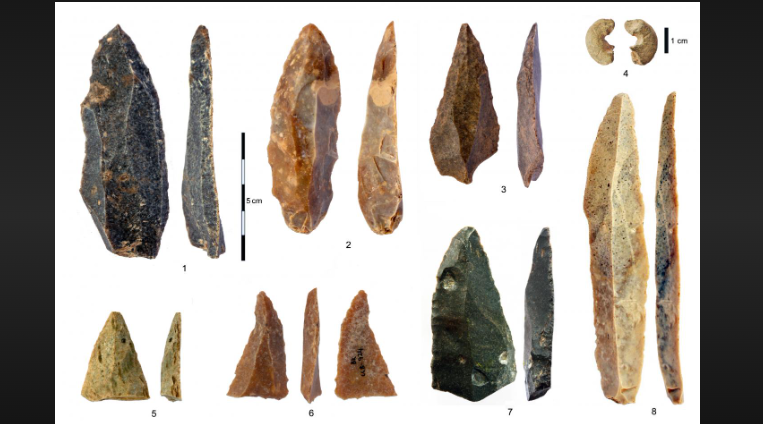Debunking Misconceptions: What Is Not True About the Upper Paleolithic Period?
The Upper Paleolithic period, a critical phase in human history, witnessed significant developments in culture, technology, and art. However, like any historical era, misconceptions and inaccuracies can arise.

Which is not true about the upper paleolithic period??
1. Clarifying the Upper Paleolithic Period:
Before we address what is not true about the Upper Paleolithic period, let's establish a brief understanding of this epoch.
The Upper Paleolithic, spanning approximately from 40,000 to 10,000 years ago, marked a time when anatomically modern humans (Homo sapiens) coexisted with other hominin species and demonstrated remarkable advancements in various aspects of life.
2. Misconception: Lack of Artistic Expression:
One common misconception about the Upper Paleolithic period is that there was a lack of artistic expression.
Contrary to this belief, this era is renowned for its rich and diverse artistic achievements.
Cave paintings, such as those found in Lascaux and Altamira, reveal the remarkable skills and creativity of Upper Paleolithic humans.
3. Misconception: Primitive Tools:
Another misconception is the idea that Upper Paleolithic humans primarily used primitive tools. In reality, this period saw significant advancements in tool technology.
Upper Paleolithic humans crafted finely made blades, spears, and harpoons, often using materials like bone, antler, and flint.
4. Misconception: Limited Social Structure:
It is also a misconception to assume that Upper Paleolithic societies had limited social structures.
Evidence suggests that these societies engaged in complex social behaviors, including burial rituals, trade networks, and the sharing of cultural practices across different regions.
5. Misconception: Uniform Diet:
Some believe that Upper Paleolithic humans had a uniform and simplistic diet, consisting mainly of meat.
However, archaeological evidence reveals a varied diet that included not only animal protein but also plants, seeds, and seafood, showcasing their adaptability and resourcefulness.
6. Misconception: Absence of Clothing:
Contrary to the misconception that Upper Paleolithic humans lacked clothing, archaeological findings indicate that they used various materials such as animal hides and plant fibers to create garments for protection and warmth.
7. Misconception: Short Lifespans:
The belief that Upper Paleolithic humans had significantly shorter lifespans is not entirely accurate.
While life expectancy was lower compared to modern standards due to harsh environmental conditions, diseases, and other challenges, individuals who survived childhood often lived into their 40s and 50s.
8. Misconception: Primitive Artistic Motivations:
Some misconceptions suggest that the art created during the Upper Paleolithic period had purely utilitarian purposes.
While some art may have served practical functions, much of it is believed to have had symbolic, religious, or cultural significance, demonstrating the depth of human creativity.

The oldest Upper Paleolithic Homo sapiens in
The Upper Paleolithic period is a testament to the remarkable capabilities and adaptability of early humans. While misconceptions about this era persist, it's essential to rely on archaeological evidence and research to gain a more accurate understanding of the achievements and complexities of Upper Paleolithic societies. Debunking these misconceptions allows us to appreciate the true richness and diversity of this pivotal period in human history.